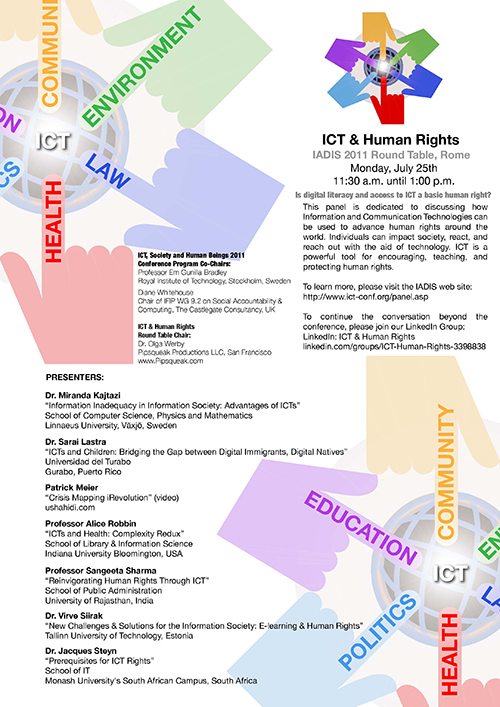Memory can be tricky—somethings seem to come to mind without bidding, while others are stubbornly evading our efforts at recalling them. We have many explanations for how and why somethings are easy to remember and others take so much effort; or why some people are very good at mnemonic feats and others not so much. Many of these mental models of how memory works are faulty (or simply not true) and are based on folksy wisdom passed from one generation to the next. Some of these wisdoms involve tricks for remembering things. For example, my Russian grandmother suggested tying corners of handkerchief to aide memory—if you notice a knot on the corner, you know that there’s something you supposed to remember. Since I don’t carry a handkerchief, I use my rings for the same effect—move a ring from finger to another (where it typically doesn’t belong) and then at least I know that should be keeping something in mind. Of course this strategy does nothing to help you remember what it is you are supposed to remember, but that’s another problem. So I thought to put together a little list of memory-related p-prims—a set of beliefs—that are common in our culture. Below,…
Conceptual Design, Pipsqueak Articles, Product Design Strategy, Users
Media and Fun
by Olga Werby •

I’ve posted a video on this blog: “Because Product Should Be Fun!” The point is that design should create an emotional reaction in its audience. Here’s a collection of bus wrappings that have a strong emotional component, go amygdala! For another example of emotional design in packaging, please check out these blogs: “Emotional Design” and “Creative Use of Media to Advance a Message” for more bus fun.
Conceptual Design, Interface Design, Pipsqueak Articles, Product Design Strategy
Creative Use of Media to Advance a Message
by Olga Werby •
Conceptual Design, Pipsqueak Articles
ICT & Human Rights Conference Notes and Thoughts
by Olga Werby •

ICT & Human Rights Panel at IADIS The presenters in attendance, in order of presentation: Professor Sangeeta Sharma Title of presentation: Reinvigorating Human Rights Through ICT School of Public Administration University of Rajasthan, India Professor Alice Robbin Title of presentation: ICTs and Health: Complexity Redux Indiana University Bloomington Dr. Sarai Lastra Title of presentation: ICTs and Children: Bridging the Gap between Digital Immigrants, Digital Natives Universidad del Turabo Gurabo, Puerto Rico Dr. Miranda Kajtazi Title of presentation: Information Inadequacy in Information Society: advantages of ICTs School of Computer Science, Physics and Mathematics Linnaeus University, Växjö, Sweden Dr. Jacques Steyn Title of presentation: Prerequisites for ICT Rights School of IT Monash South Africa Patrick Meier and Dr. Virve Siirak were unable to attend in person. I summarized Patrick’s work in my opening statement and I hope Dr. Siirak would comment on his work below or on our LinkedIn community (ICT & Human Rights—all are welcome to join our open group). Opening Statement I chose to introduce each subtopic of the panel as part of my opening statement and to give it a slightly unusual take for each topic. Below are my notes and I’ve posted the PDF of my KeyNote on…
Background Knowledge, Background Knowledge Errors, Causal Net Problems, Cultural Differences, Mental Model Traps, Pipsqueak Articles, Users
p-prims can be dangerous
by Olga Werby •

Some p-prims are harmless, but some can lead to serious bodily harm. The image above shows villages in Indonesia lying on an electrified railway track. Why? They believe this will improve their health. Their p-prim has to do with medicine: “electricity can cure some diseases.” This is not totally untrue, as is the case with all p-prims. Ultrasound therapy helps heal certain muscle strains, and the ultrasound machine runs on electricity. Heat lamps are also commonly used therapeutically. And they too require electricity. There are many, many other examples. It’s easy to explain how such folksy wisdom gets passed around the community. The problem with this particular p-prim is the resulting decisions that people make based on their beliefs in the curative power of electricity. How would a poor farmer in Rawa Buaya, outside Jakarta, get electricity? The most accessible source is this railway track. A tragedy is only a train away…
Anchoring Errors, Background Knowledge Errors, Cognitive Blindness, Conceptual Design, Cultural Bias, Cultural Differences, Errors, Ethnographic & User Data, Metaphor Mistakes, Mirroring Errors, Pipsqueak Articles, Product Design Strategy
Lost in Translation: Cultural Differences in Advertising
by Olga Werby •
“Lost in Translation” was a wonderful movie by Sofia Coppola, starring Bill Murray and Scarlett Johansson. It depicted the delicious confusion of Western tourists in total Japanese cultural emersion. In particular, the scenes where Bill Murray shoots a liquor commercial for the Japanese market are simply priceless. In retrospect, I see where Ms. Coppola got her ideas. Her cousin, Nicholas Cage, have been making wonderfully odd (to our sensibilities) commercials for years. He clearly had stories to share. Here are a few of his gems, courtesy the World Wide Web: and But it’s not only Japan that surprises our/my cultural biases. This morning, my husband and I went to a local grocery store in Rome, Italy. In the cheese section, there was a little paper bottle of parmesan cheese with a mouse of the package. The mouse didn’t work for me at all! So much for cultural differences. Here’s a small collection of ads for McDonalds from all over the world. Please compare it to the packaging and menus for this restaurant chain that I’ve posted here in the past: “Cultural World Domination”. Notice all of the anchoring errors, metaphor mistakes, cultural biases, mirroring errors, and general cognitive and cultural…
Conceptual Design, Cultural Bias, Flow, Interaction Design, Interface Design, Language, Perception, Pipsqueak Articles, Product Design Strategy, Scaffolding, Working Memory
The Haptic Feel of Books versus eBooks
by Olga Werby •

We’ve traveled to Rome for our family vacation this year, and aside from a few summer reading books that I couldn’t find in an eBook format, we relied on our two Kindles and 3 iPads for our family reading needs. This is the second summer we brought primarily electronic versions of books—”The Count of Monte Cristo” is much easier to read when it fits into your hand and doesn’t weigh a ton… In the days before the Kindle and iPad, we carried an extra suitcase just for books. But there are drawbacks to buying and reading eBooks. Below are some of my thoughts and experiences—the cogitations of a voracious reader. Time & Progress As I was reading my novels, I found myself repeatedly trying to figure out where in the book I was. How far along was I? When is the next natural break (chapter, section end)? How many pages are there to the end of the chapter, end of the section, end of the book? These were not idle curiosities about my reading accomplishments, although when you do finish reading the book version of “The Count of Monte Cristo”, you do have a sense of having read something. An…

